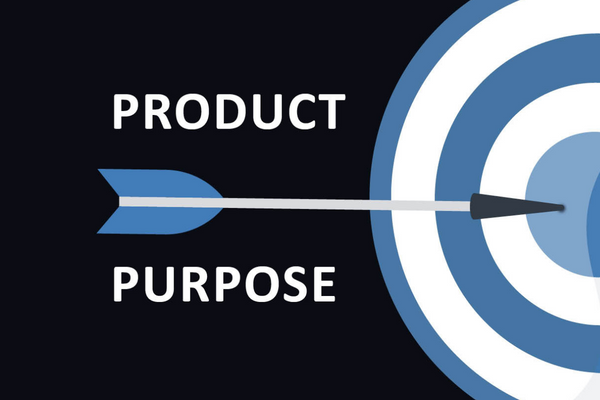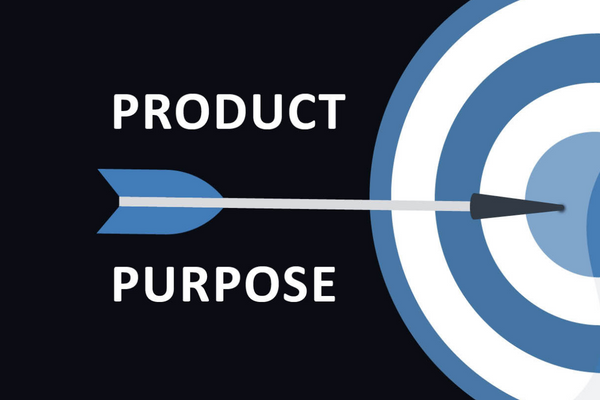How purpose can guide your brand to its highest potential

- 13 January 2023
After our recent member-exclusive webinar, How purpose can guide your brand to its highest potential, CIM course director Paul Hitchens is here to answer your questions on all things brand, strategy and purpose.
Paul Hitchens is the author of three bestselling books on brand management published by Hodder Education: ‘Brand Management – In A Week’, ‘Successful Brand Management’ and ‘Create the Perfect Brand’. He is a Chartered Marketer with an MA in ‘Brands, Communication & Culture’ and has gained over thirty years of creative industry experience working both agency and client-side for household brand names.
When choosing brand values, do you think this is a discussion that needs to be had throughout an organisation or only the senior team?
The identification and determination of a brand’s values is a matter that affects the whole organisation. An audit of values across all personnel is strongly advised at the outset of a values assessment. A values survey presents an opportunity for senior management to measure the prevailing culture and identify the best qualities of the brand as core values and recognise any shadow values that may prevent the fulfilment of the brand’s purpose.
Peter Drucker, the famous management consultant, is frequently quoted warning that "culture eats strategy for breakfast". Drucker’s statement implies that the culture of your company affects success regardless of how effective your brand strategy promises to be. Sidney Yoshida’s ‘Iceberg of ignorance’ observed that 100% of problems are known to front-line employees, only 74% were known to team leaders, 9% to middle management and just 4% to top management! If you fail to measure the prevailing corporate culture, you will not be able to evaluate if the brand strategy’s purpose and values are built on solid cultural foundations.
Can brands keep changing their vision and purpose over and over again to meet the needs of the environment? Or do you think this will confuse consumers?
I do not advise brands to frequently change their vision and purpose because brands build integrity and meaning through continuity and consistency. If a brand frequently changes its direction, it will tell its audience that it stands for nothing more than fickleness. Markets fluctuate and circumstances change but strong brands maintain salience through persistence and repetition. There will be situations when a brand needs to adapt to survive but their reinvention should be built around a central truth that still resonates with its audience.
How do you think businesses can ensure that their product aligns with their purpose?
The alignment of product with purpose is managed through clearly stated values that are manifested through associated behaviours. If these values and behaviours are compromised by the product or service performance, it will present a challenge to the integrity of the brand. The purpose of a brand is typically linked to its founder(s) and their initial products and services through the problems they solved for their customers.
The purpose and values may not have been articulated at the foundation stage of the brand, but their presence will be felt through the brand’s behaviours and the way staff, employees, suppliers and customers are treated. If a mature organisation evolves to include products and services that no longer match the original ethos of the organisation the integrity of the brand will be tested.
How should a new company trying to establish itself demonstrate that it is a brand with integrity?
Brand integrity is earned through the delivery of multiple positive experiences. As the old adage goes, ‘you only get one chance to make a first impression’, so make sure it’s a positive one. New brands have a clean slate, but this also means that little may be known about them. A brand’s identity helps to position the brand and frame it in the mind of the consumer, but as the saying goes, ‘beauty is in the eye of the beholder’ i.e., what makes an attractive brand is subjective.
A carefully chosen name and strapline may convey character and tone of voice. A logo, graphic style and aesthetic can help position a brand e.g., inexpensive or premium, utilitarian or luxurious, entry-level or high-end, ethical or nuanced. The customer experience will be delivered through a linked chain of touchpoints that each put the brand promise to the test. It’s important to analyse each stage of the customer journey for continuity and consistency. Integrity is a by-product of a good reputation and as founding father Benjamin Franklin famously said, ‘It takes many good deeds to build a good reputation, and only one bad one to lose it’.
How can a brand find out what its customers want from them?
Brands can find out what their customers want by communicating with them and engaging in dialogue. It has never been easier for brands to engage with their customers through social media. Happy contented customers that share their enthusiasm for a brand have the potential to influence the behaviour of their social group and beyond. A happy customer's validation builds both brand value and customer-based brand equity.
An unhappy customer that shares their disappointment provides a reputational predicament or an opportunity for the brand. Criticism may be used as valuable feedback and the catalyst to improve products and service performance that converts fierce critics into evangelists. A brand that chooses not to test the social weather or ignore its customers may be storing up bigger problems for later. Think about where your customers are and strive to where they are with relevant campaigns of engagement that stimulate feedback from trade fairs, promotions, sponsorships, and competitions across both online and offline environments.
Should all brands aim to be purpose-driven? Or are there some industries, products, or organisations where this isn't possible or appropriate?
The use of the word ‘Purpose’ has become an umbrella term that embraces multiple definitions including sustainability, corporate social responsibility (CSR) and environmental social and governance (ESG) issues. The enthusiasm with which some brands have attached themselves to these issues has seen a rise of greenwash accusations calling out virtue signalling. Words come in and out of fashion and can change meaning over time. The dictionary defines purpose as an end to be attained, an intention, resolution, or determination.
Any worthwhile endeavour will need a purpose and that purpose does not have to be limited to making a profit. Brands promise to solve problems for their customers. The automobile manufacturer Volvo’s purpose is safety through safer vehicles promising safer journeys for their owners. The household technology company Dyson’s purpose is innovation manifested through bagless vacuum cleaners and bladeless fans promising efficiency and performance. The retailer John Lewis has a purpose centred on the happiness of its employees who are partners which promises better service and a happier experience for their customers.
At the end of the 20th century, the international brand consultancy Wolff Olins championed the notion of ‘the big idea’ upon which the brand leverages meaning. Every enterprise will have an inception point or big idea that motivates the venture forward with an idea worth pursuing. Marketers can harness the energy of this motivation and recognise it as a brand purpose. All brands can be purpose-driven if they recognise the unique inspiration that motivates them.
Do companies need a specialist brand manager, or can anyone be designated in the marketing department?
The ultimate responsibility of brand management falls upon the shoulders of leadership, whether they are the Chief Executive Officer (CEO), Managing Director, Owner or Entrepreneur they are the Brand Champion. Large organisations that own portfolios of individual brands would be advised to assign management of these assets to accountable individuals.
The designation of an individual from the marketing department would require the selection of an experienced professional with a thorough understanding of the brand strategy, culture and history. In a broader sense, every employee of a company has a duty of care to their employer brand and the brands they represent through their labour.
Does a brand’s logo have an impact on the brand?
A logo is not a brand, but a well-designed identity system combined with an excellent product or service that excels at all touchpoints will communicate trust. The logo and brand identity serve as a wayfinding system that guides customers towards products and services and then authenticates their provenance. Apple is the world’s most valuable brand built on creativity and design excellence. The Apple logo design by Rob Janoff at Regis McKenna in 1977 has since become an enduring icon and the silhouette is now one of the most recognisable and valuable logos around the world.
A glance at the logos of the world's most valuable brands reveals that there is little correlation between logo design excellence and brand value. The FTSE 100 is full of high-performance brands with logos that would never win any design awards. A logo is the tip of the iceberg, they are the flag flying above the castle that points to something much bigger. Great graphic design and branding aesthetics can help to position the product or service in the mind of its audience, but the brand experience will be where the impact is truly felt.
How do you get the attention of the senior management in a small team so that they appreciate the need for the development of a brand strategy when they don't truly understand the marketing function?
A recent study by Brand Finance of the management teams of the top 100 Global Brands revealed that 29% have a Finance background, 37% have an MBA and only 10% have a Marketing background. It is clear that management teams are not typically drafted from the ranks of marketers and have a strong bias toward academia and finance.
My advice is to present an evidence-based proposal that demonstrates examples from your industry and similar-sized companies where carefully branded products and services have outperformed poorly branded alternatives and commodities.
Should a brand strategy always be documented and if so, are there any templates you can recommend?
A brand strategy should be shared, understood, and demonstrated through practiced behaviours. A written strategy is advisable, but the imperative is for Senior Management and Line Managers to bring the strategy to life in a meaningful way that recognises and rewards employees for its actuation.
A brand strategy document could form the basis of employment induction for all new employees so that they understand their duty of care as part of the brand. A template and guide is available for CIM Members to download.
Have you got examples of how this model may be used with personal branding for individuals?
The Key Brand Criteria model is a versatile tool for every type of brand from organisations to individuals as it prompts the essential questions that generate the answers necessary to move forward and prosper.
We can observe the criteria through famous individuals who have strong personal brands. For example – Sir David Attenborough.
Key brand Criteria: Sir David Attenborough
Purpose: The brand’s raison d'etre
Sir David’s Purpose is a lifelong commitment to the study of our planet's natural history
Vision: The brand’s long-term ambition
Sir David’s Vision is to conserve our planet's natural history for future generations
Values: The qualities the brand stands for
Sir David’s values include; Conservation, Education, Sustainability, Integrity
Mission: The brand’s charter for success
Sir David’s Mission is to protect the planet through awareness and education backed by the latest scientific evidence
Proposition: The brand’s unique quality
Sir David has been called "the great communicator, the peerless educator" and "the greatest broadcaster of our time."
Positioning: The brand’s market relationship
Sir David grew up in an academic household and graduated from Cambridge University
Personality: The brand’s character
Adventurous, Exuberant, Engaging, Trustworthy
Audience: The brand’s field of attraction
Sir David has been named among the 100 Greatest Britons in a 2002 BBC poll and is one of the top ten "Heroes of Our Time" according to New Statesman magazine.
Is there a subtle way to communicate the brand purpose in the proposition or is this always a precept of fine print within the brand curriculum?
Brand Purpose and Proposition are intrinsically linked and should not contradict one another. Each element of the key brand criteria supports the brand purpose, for example, the retailer John Lewis’ Brand Purpose is, ‘Working in Partnership for a Happier World’. The essential purpose of the John Lewis brand is happiness - happier people, happier world, happier business.
The retailer's Brand Proposition is, ‘We strive to be a better way of doing business’. The retailer is aiming to ‘create a kinder, fairer future for Partners, customers, suppliers, and the communities in which we operate, building strong and trusted relationships with them whilst ensuring we listen to and understand their concerns’. It makes sense that happy staff are more likely to create the happiest customer experiences.
Which is better, focused content that may isolate large groups or more generic content that doesn't create brand loyalty?
“Less is More” is a quote often attributed to the designer and architect Ludwig Mies van der Rohe. The German American architect established his own modernist style of extreme clarity and simplicity to represent modern times and contrast against everything that had gone before.
A strong brand stands apart from its competitors and represents something relevant in the mind of the consumer. It stands to reason that the more things a brand attempts to stand for, the less differentiated and more generic it becomes until it turns into something meaningless. The more messages a brand tries to communicate, the lower the chances of each being recalled and so ‘less is more.
CIM members can access the Member-exclusive webinar now on-demand.
If you're looking to build a resilient, value-driven brand you can strengthen your skills and strategy with our Strategic Brand Management training course.
Paul presents the following four courses for the CIM: Strategic Brand Management, Sustainable Brand Strategy, Distinctive Brand Asset Management and International Brand Strategy.

- 0 views

 FAQs
FAQs
 Log in
Log in
 MyCIM
MyCIM








